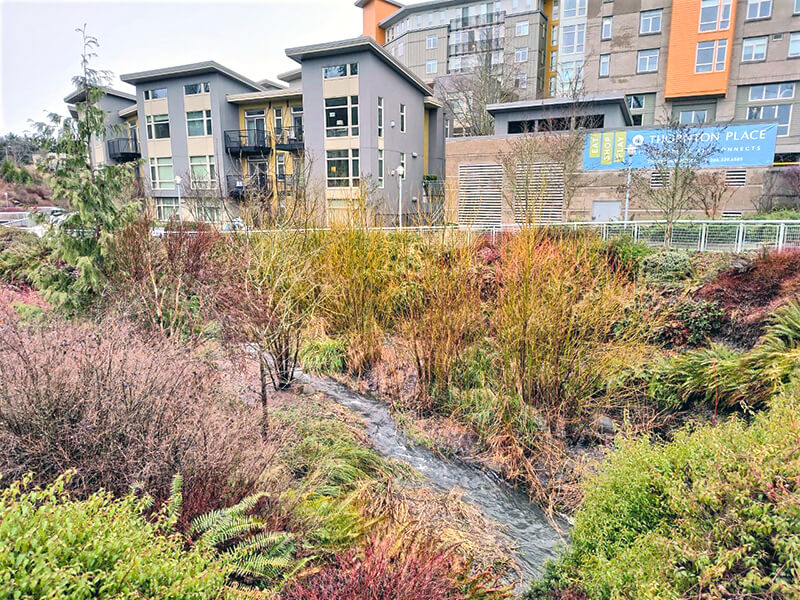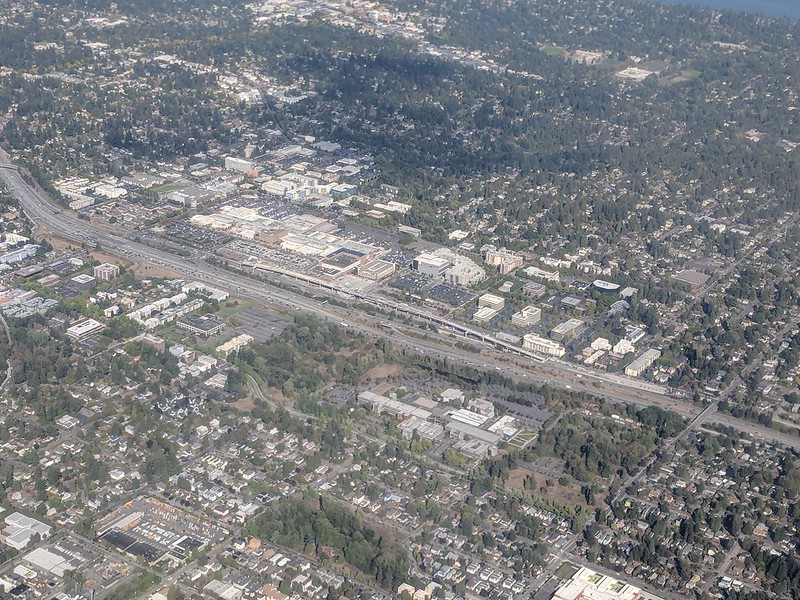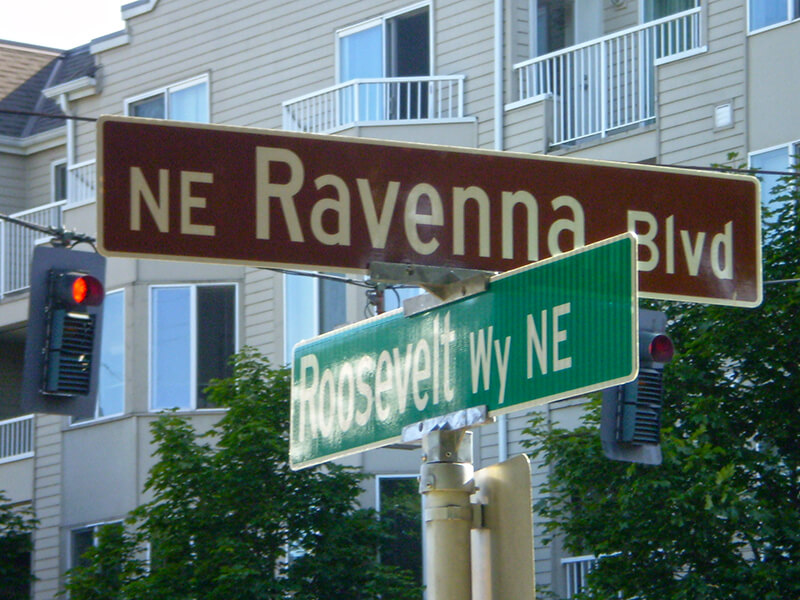Thornton Creek runs 18 miles from Shoreline to Seattle, where it empties into Lake Washington at Matthews Beach Park. Its watershed, which drains 11.6 square miles, is the largest in Seattle. Yet until recently, no street bore its name — and the one that now does is a short private road.
NE Thornton Place, which runs not quite 500 feet between 3rd Avenue NE and NE 103rd Street, cuts through the Thornton Place development, built on the site of a former Northgate Mall parking lot under which the South Fork of Thornton Creek ran in a culvert. A portion of the creek was daylighted as part of the project. (Incidentally, I had the pleasure of seeing the IMAX version of The Beatles: Get Back – The Rooftop Concert at the Regal Thornton Place on January 30 of this year, the 53rd anniversary of the historic event. I am an even bigger fan of the Beatles than I am of odonymy!) You can read more about the Thornton Creek Water Quality Channel at Wedgwood in Seattle History.

I originally wrote here that “The creek is named for John Q. Thornton (1825–1904), who… never actually lived in the Seattle area, but in 1885 bought land near what are today Meridian Park and Twin Ponds Park, at or near the headwaters of Meridian Creek, a tributary of the North Fork of Thornton Creek….” However, in the summer of 2022, the person whose article on Thornton I cited told me that they no longer believed this to be the case, and had edited their article accordingly. The creek’s namesake, therefore, remains a mystery.
Born and raised in Seattle, Benjamin Donguk Lukoff had his interest in local history kindled at the age of six, when his father bought him settler granddaughter Sophie Frye Bass’s Pig-Tail Days in Old Seattle at the gift shop of the Museum of History and Industry. He studied English, Russian, and linguistics at the University of Washington, and went on to earn his master’s in English linguistics from University College London. His book of rephotography, Seattle Then and Now, was published in 2010. An updated version came out in 2015.

